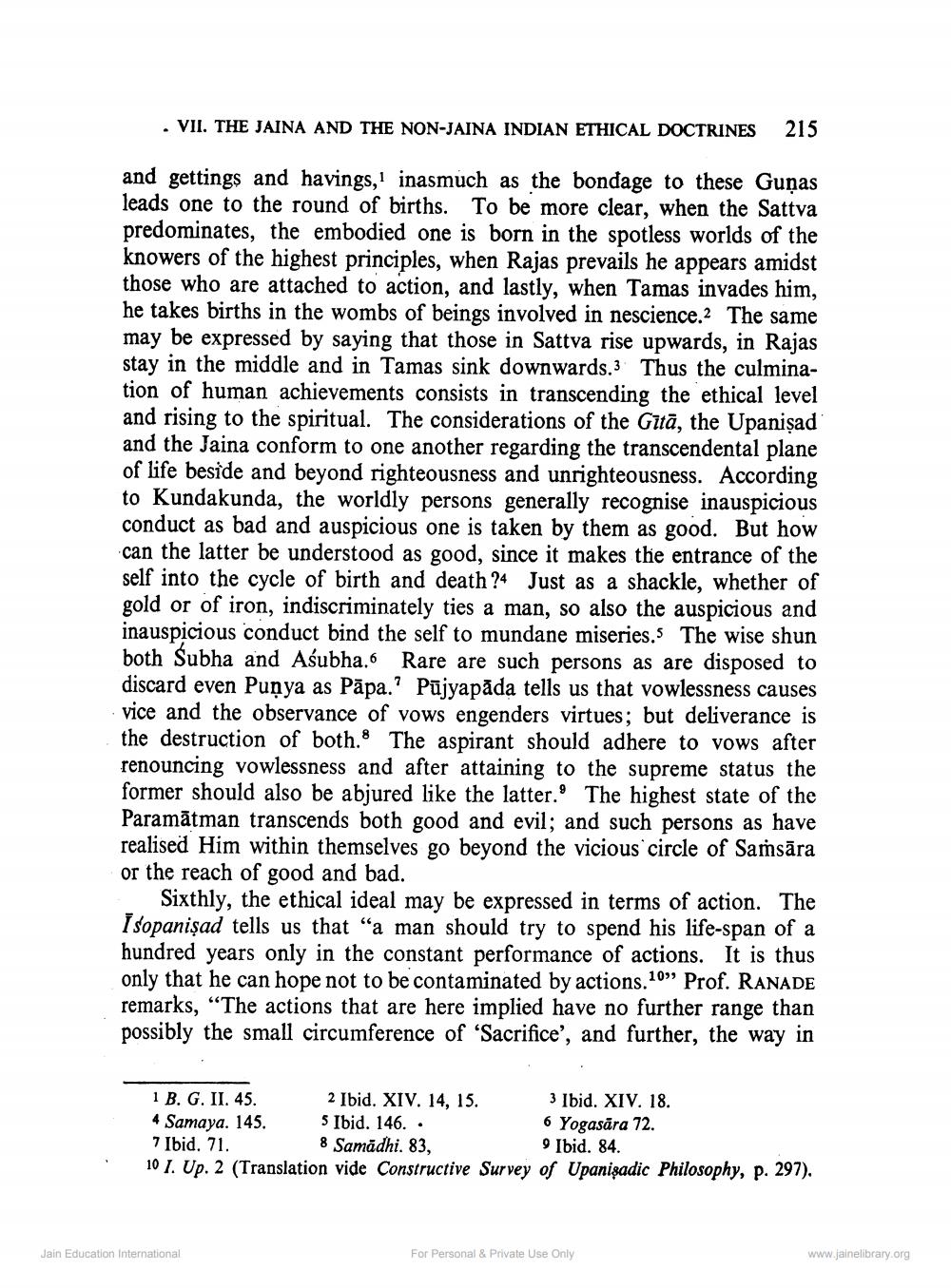________________
. VII. THE JAINA AND THE NON-JAINA INDIAN ETHICAL DOCTRINES
215
and gettings and havings, inasmuch as the bondage to these Guņas leads one to the round of births. To be more clear, when the Sattva predominates, the embodied one is born in the spotless worlds of the knowers of the highest principles, when Rajas prevails he appears amidst those who are attached to action, and lastly, when Tamas invades him, he takes births in the wombs of beings involved in nescience.2 The same may be expressed by saying that those in Sattva rise upwards, in Rajas stay in the middle and in Tamas sink downwards.3 Thus the culmination of human achievements consists in transcending the ethical level and rising to the spiritual. The considerations of the Gitā, the Upanisad and the Jaina conform to one another regarding the transcendental plane of life beside and beyond righteousness and unrighteousness. According to Kundakunda, the worldly persons generally recognise inauspicious conduct as bad and auspicious one is taken by them as good. But how can the latter be understood as good, since it makes the entrance of the self into the cycle of birth and death ?4 Just as a shackle, whether of gold or of iron, indiscriminately ties a man, so also the auspicious and inauspicious conduct bind the self to mundane miseries. The wise shun both Subha and Aśubha. Rare are such persons as are disposed to discard even Punya as Pāpa.? Pūjyapāda tells us that vowlessness causes vice and the observance of vows engenders virtues; but deliverance is the destruction of both.8 The aspirant should adhere to vows after renouncing vowlessness and after attaining to the supreme status the former should also be abjured like the latter.' The highest state of the Paramātman transcends both good and evil; and such persons as have realised Him within themselves go beyond the vicious circle of Samsāra or the reach of good and bad.
Sixthly, the ethical ideal may be expressed in terms of action. The Isopanişad tells us that “a man should try to spend his life-span of a hundred years only in the constant performance of actions. It is thus only that he can hope not to be contaminated by actions.10” Prof. RANADE remarks, “The actions that are here implied have no further range than possibly the small circumference of 'Sacrifice', and further, the way in
1 B. G. II. 45. 2 Ibid. XIV. 14, 15. 3 Ibid. XIV. 18. 4 Samaya. 145. 5 Ibid. 146.
6 Yogasāra 72. 7 Ibid. 71. 8 Samadhi. 83,
9 Ibid. 84. 101. Up. 2 (Translation vide Constructive Survey of Upanişadic Philosophy, p. 297).
.
Jain Education International
For Personal & Private Use Only
www.jainelibrary.org




